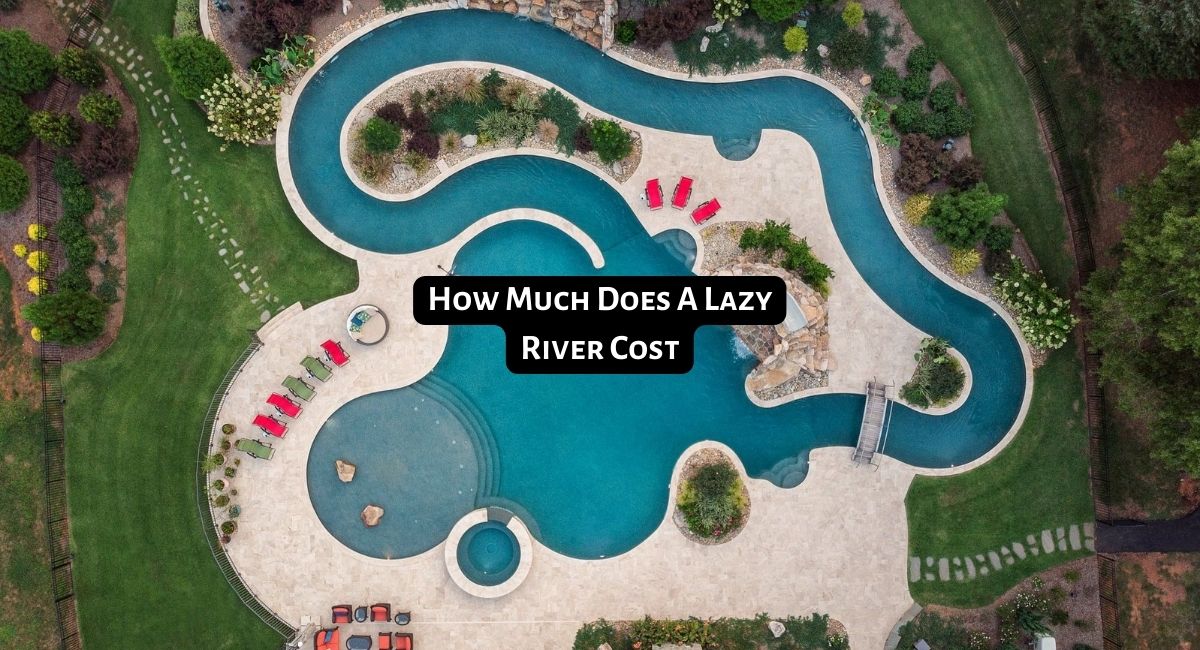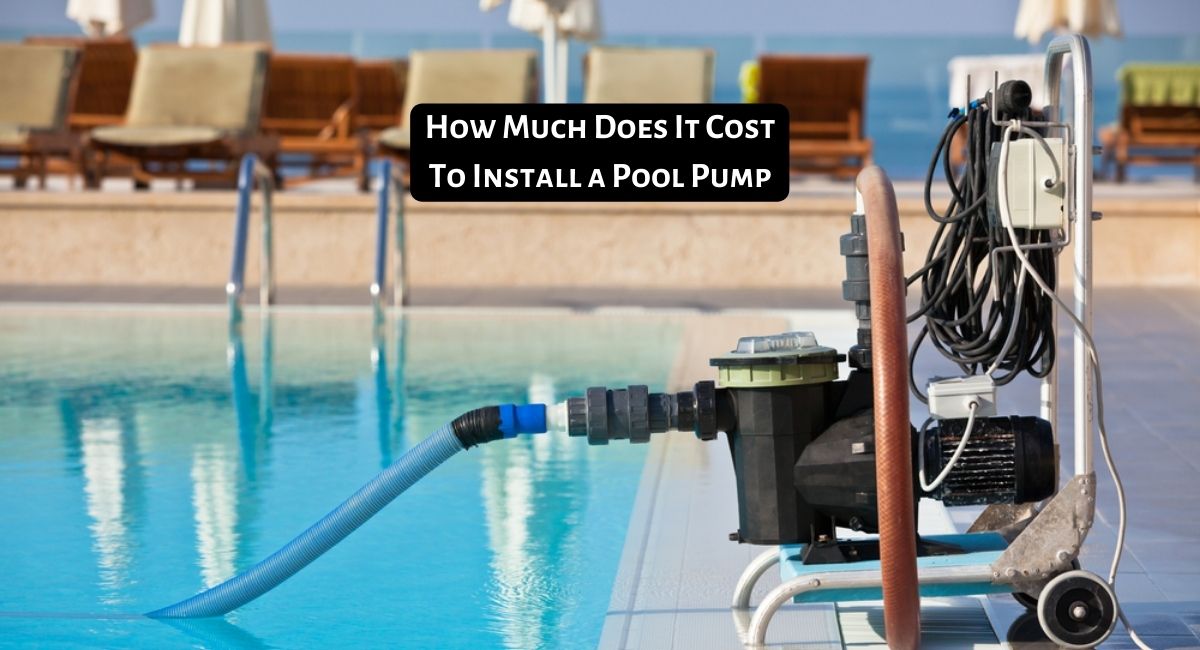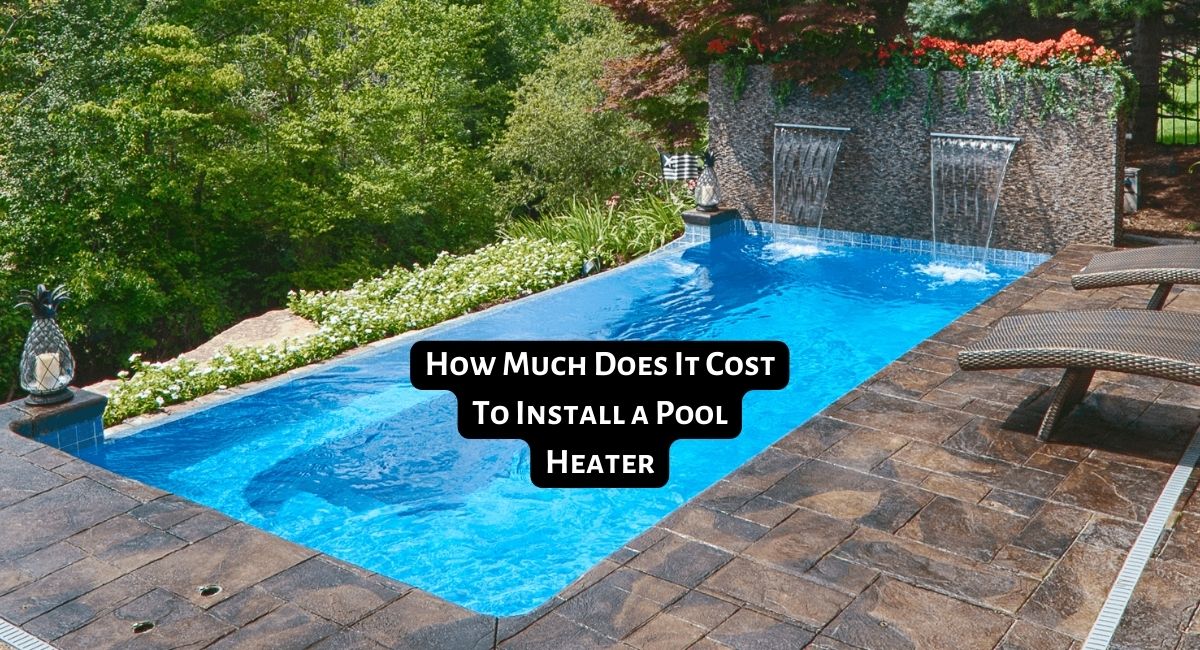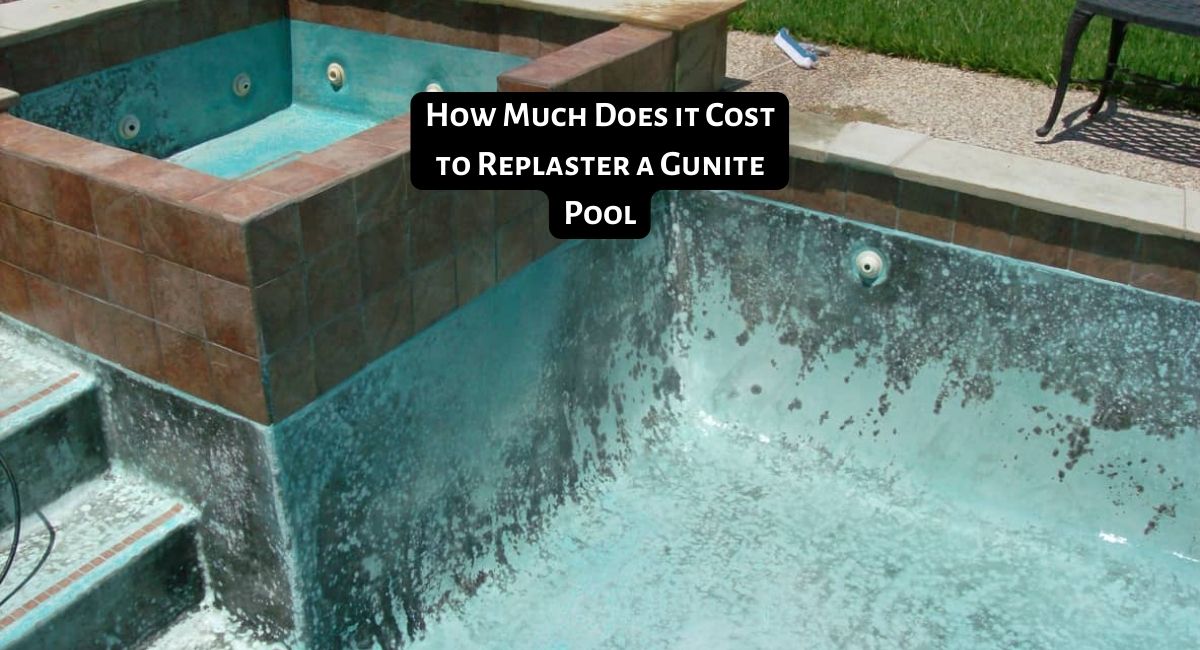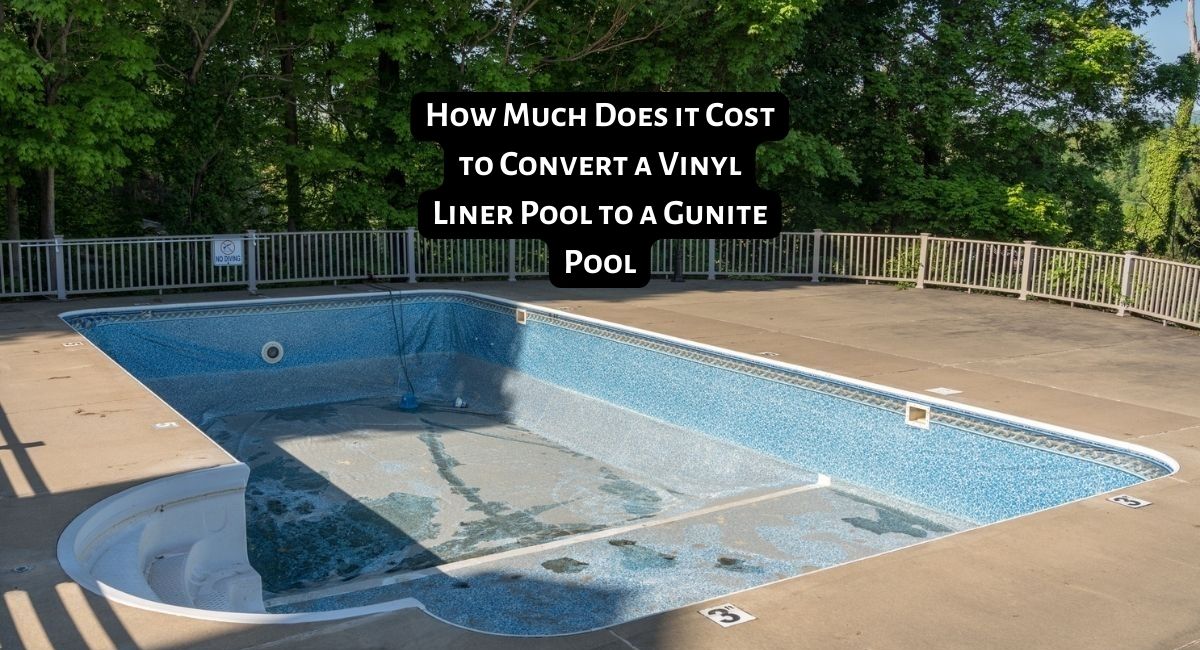Imagine lounging by the edge of a shimmering pool that seemingly merges with the horizon, offering breathtaking views that stretch into the distance. Infinity pools, often associated with luxury resorts and high-end properties, have become an epitome of elegance and sophistication.
These architectural marvels create an illusion of water extending to infinity, seamlessly blending with the sky or surrounding landscape. However, with their exquisite design and breathtaking aesthetics comes the question that piques the curiosity of many: How much does an infinity pool cost?
In this comprehensive guide, we delve into the various factors that influence the cost of building an infinity pool. From the initial design concepts to the finishing touches, we’ll explore the components that contribute to the overall expense of bringing this lavish aquatic masterpiece to life.
Whether you’re a homeowner considering adding a touch of opulence to your property or an enthusiast eager to learn about the artistry behind infinity pools, this article aims to provide you with insights that go beyond the surface and help you understand the investment involved in creating these mesmerizing aquatic havens.
Table of Contents
Key Takeaways
- An infinity pool, also known as a vanishing edge or negative edge pool, is a type of swimming pool designed to create the illusion that the water extends seamlessly to the horizon.
- Factors that affect the cost of building an infinity pool include size, materials, type of pool, landscaping, permits, and filling the pool with water.
- The average cost of an infinity pool can range from $55,000 for a modest pool to $130,000 or more for a larger, more intricate pool with premium materials and additional features.
- Labor costs make up approximately 25-50% of the total expenses, with an average of $30 per square foot.
- Material costs make up 50-75% of the total expenses, with an average range of $40-60 per square foot depending on the chosen material (fiberglass, vinyl liner, concrete).
- Fiberglass pools are a budget-friendly option, vinyl liner pools offer customization options, and concrete pools are known for their durability and customization options.
- It’s important to consult with a professional pool builder to get an accurate estimate based on specific needs and preferences.
What is an Infinity Pool
An infinity pool, also known as a vanishing edge pool or negative edge pool, is a type of swimming pool designed to create the visual illusion that the water extends seamlessly to the horizon, merging with the surrounding landscape or a distant view.
Unlike traditional pools that have a clearly defined edge, an infinity pool features one or more edges that appear to blend into the environment, giving the impression that the water flows over the edge and disappears into the distance.
The captivating design of an infinity pool is achieved through careful engineering and the use of an overflow system. One or more edges of the pool are constructed slightly lower than the water level, allowing water to spill over into a catch basin or reservoir.
From there, the water is pumped back into the pool, creating a continuous cycle. This overflow effect creates the illusion of an endless or “infinite” expanse of water, hence the name “infinity pool.”
Key characteristics of an infinity pool include:
- Aesthetic Appeal: Infinity pools are renowned for their stunning visual impact. The seamless transition between the water’s surface and the surrounding environment creates a sense of luxury and elegance.
- Panoramic Views: The design of an infinity pool is often chosen to take advantage of breathtaking views, whether it’s a scenic landscape, an ocean vista, a city skyline, or any other visually appealing backdrop.
- Illusion of Continuity: The overflow system and the vanishing edge create the illusion that the pool’s water extends to infinity. This creates a unique and captivating atmosphere for swimmers and observers alike.
- Engineering Expertise: The construction of an infinity pool requires specialized engineering to ensure proper water flow, catch basin design, and hydraulic systems that maintain the desired visual effect.
- Customization: Infinity pools can come in various shapes, sizes, and designs. They can be integrated into a variety of architectural styles, making them a versatile choice for different types of properties.
Factors Affecting Infinity Pool Costs
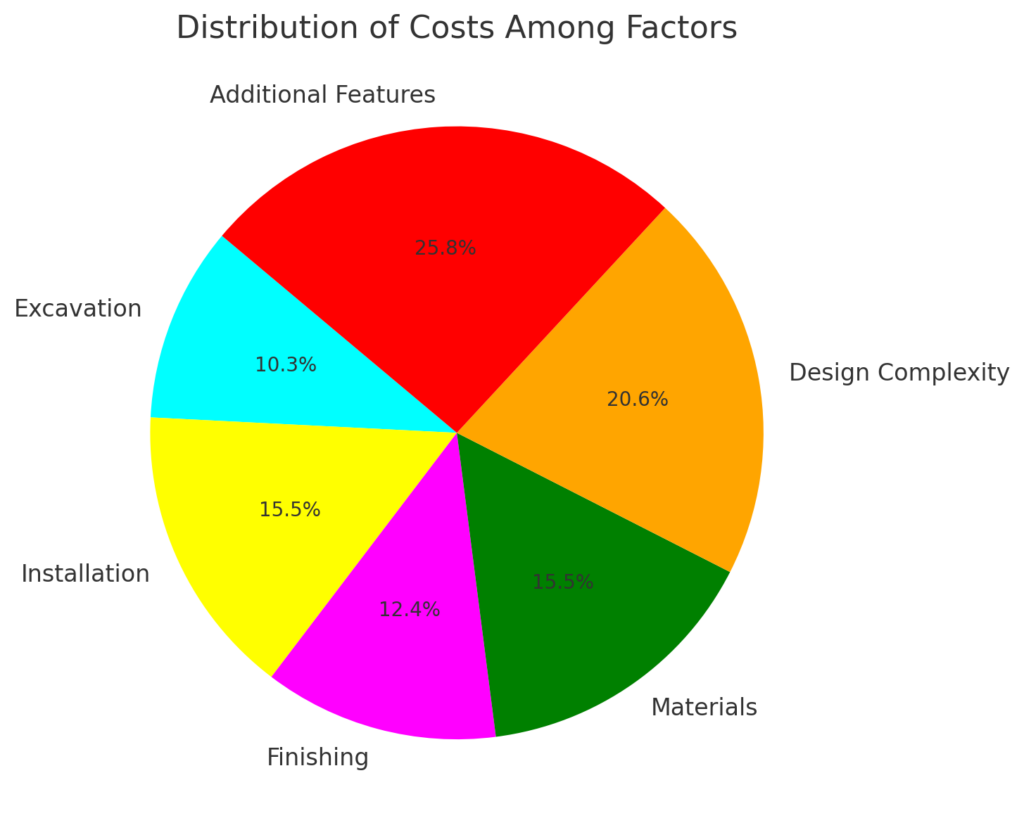
Creating an exquisite infinity pool comes with a multitude of considerations that collectively influence the overall cost of the project. Understanding these factors is essential for accurate budgeting and ensuring that your dream pool becomes a reality. Let’s delve into the detailed explanations of the factors that impact infinity pool costs:
Size: The size of an infinity pool directly correlates with the expenses involved. Larger pools require more materials, greater amounts of water, and extended labor hours. Consequently, the cost increases as the surface area and volume of the pool expand. The excavation, construction, and finishing of a larger pool necessitate additional resources, contributing to higher overall expenses.
Material: The choice of materials significantly impacts the cost of an infinity pool. Opting for premium materials such as high-quality tiles, fiberglass, or concrete can elevate the overall aesthetic and durability of the pool but also add to the expenses. High-quality materials often come with a higher price tag, contributing to both the initial installation costs and the long-term value of the pool.
Type of Pool: Different types of infinity pools, such as vanishing edge or dual-edge designs, can affect costs due to their unique construction requirements. The engineering and design considerations for achieving the desired visual effect can be more complex for certain pool types. Specialized engineering for vanishing edge designs, for example, requires careful calculation to achieve the seamless edge and overflow effect, which can influence the final price.
Landscaping: The area around the pool contributes to the overall ambiance and aesthetics of the pool space. Clearing the pool area of existing vegetation, landscaping, or debris can require additional labor and resources, affecting the project’s budget. Landscaping features such as hardscaping, plants, and pathways also add to the overall costs but contribute to the pool’s overall visual appeal.
Permits: City permits and regulations are an important consideration when building an infinity pool. Obtaining the necessary permits and complying with local building codes may entail costs. Certain areas may require additional safety measures, such as the installation of security fences around the pool, to ensure the well-being of residents and visitors. These compliance-related expenses should be factored into your budget.
Filling the Pool: Filling an infinity pool with water is an essential step after construction is complete. The cost of filling the pool varies depending on the city and water rates. This expense, though relatively small compared to other factors, contributes to the overall project costs and should be taken into account.
How Much Does an Infinity Pool Cost
An infinity pool can be a truly luxurious addition to any home or resort, providing a stunning and tranquil oasis for relaxation. However, the cost of building an infinity pool can vary significantly depending on various factors. Factors such as the size, location, materials used, and additional features like waterfalls or lighting can all impact the final cost.
Therefore, it is essential to consult with a professional pool builder to get an accurate estimate based on your specific needs and preferences. With careful planning and the right budget, you can transform your outdoor space into a haven of elegance and serenity with a mesmerizing infinity pool.
The Average Cost of an Infinity Pool
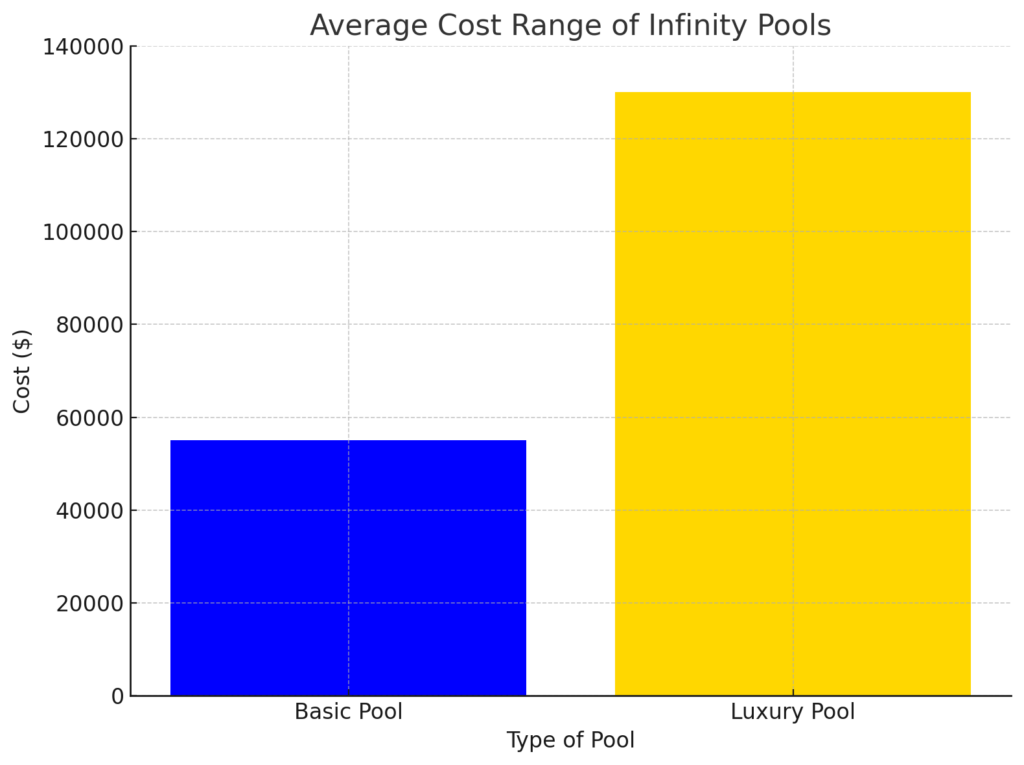
The cost of installing an infinity pool can vary based on factors such as location, size, materials, additional features, and the complexity of the design. On the lower end of the spectrum, a modestly sized and straightforward infinity pool might come with a price tag of around $55,000. This would encompass the basic construction, including excavation, installation, and finishing.
On the higher end, particularly for larger pools with intricate designs, premium materials, and additional features like built-in hot tubs or integrated lighting, the cost can soar to $130,000 or more. These luxury installations often involve custom engineering to achieve the desired visual effect and may require specialized construction techniques.
It’s important to note that this average cost serves as a baseline and doesn’t take into account the additional costs that might arise during the construction process or the optional enhancements that can elevate the overall experience of your infinity pool. As we delve further into this guide, we’ll explore these variables in more detail, helping you understand the factors that contribute to the final cost of your infinity pool project.
Infinity Pool Cost Breakdown
Creating an enchanting oasis with an infinity pool involves several cost components, each contributing to the overall investment. Let’s delve into the two primary categories that make up the bulk of your installation expenses: labor costs and material costs.

Labor Costs
Labor costs are a significant portion of the total expenses, accounting for approximately 25% to 50% of the overall cost of installing an infinity pool. With the typical total cost sitting at $80 per square foot, this equates to around $20 to $40 per square foot, with the average falling at $30 per square foot for labor. This range can fluctuate based on factors such as geographical location, local labor rates, and the complexity of the pool design.
Factors Influencing Labor Costs:
- Size and complexity of the pool: Larger and more intricate pool designs may require more labor and skilled workers, thus increasing labor costs.
- Site conditions: The condition of the site and accessibility can impact labor costs. Difficult terrain, poor soil conditions, or limited access to the site may require additional labor and equipment.
- Customizations and extras: If you choose to incorporate custom features, such as waterfalls, intricate tile work, or unique landscaping, it may require specialized labor and increase the overall labor costs.
- Local labor rates: Labor costs can vary depending on the location and the average rates for skilled labor in that area. Higher living costs in certain regions may result in higher labor rates.
- Timeframe and scheduling: If you require the pool installation to be completed within a specific timeframe or need workers to accommodate your schedule, it may require additional labor and potentially increase costs.
- Contractor expertise and reputation: Hiring a reputable and experienced contractor who specializes in infinity pool installation may have higher labor rates due to their expertise and quality of work. It’s important to discuss and negotiate labor costs with your chosen contractor to ensure transparency and clarity regarding the factors influencing the final labor cost.
Material Costs
Materials make up 50% to 75% of the cost of installing an infinity pool. The cost of materials for an average vanishing edge pool ranges from $40 to $60 per square foot. However, it’s important to note that costs for materials can increase depending on any extras you plan to include. The type of material you choose can also significantly influence the final price, as each material option offers unique attributes and aesthetic considerations.
Overview of Materials:
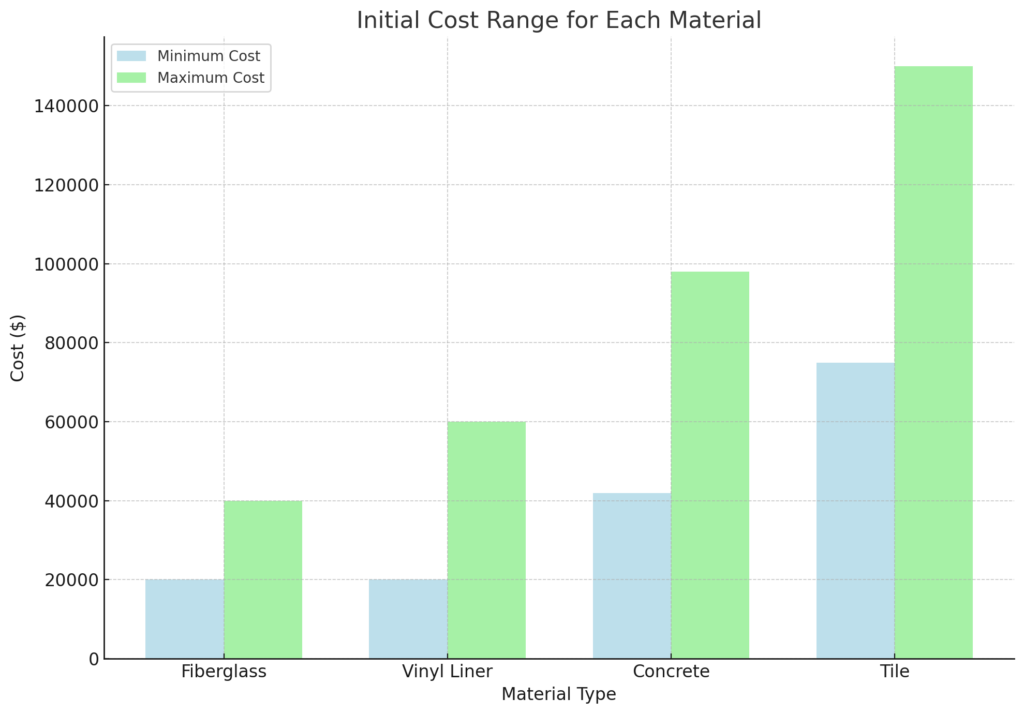
Fiberglass
Fiberglass pools are a budget-friendly option that comes with several advantages. The cost of a fiberglass pool typically falls in the range of $20,000 to $40,000, making it an attractive choice for those seeking an affordable yet elegant pool solution. One of the key benefits of fiberglass is its smooth surface, which is not only aesthetically pleasing but also makes it easier to clean and maintain.
However, it’s important to consider the long-term maintenance costs. Over the course of a decade, you can expect to spend around $5,000 to $10,000 on maintenance for a fiberglass pool. This includes expenses related to water treatment, pool equipment upkeep, and general repairs. Despite the maintenance costs, fiberglass pools remain a popular option due to their initial affordability and relatively low ongoing maintenance requirements.
Vinyl Liner
Vinyl liner pools are another budget-friendly choice, with costs ranging from $20,000 to $60,000. These pools are known for their relatively quick installation process and customization options. The vinyl liner itself offers a smooth surface, which is comfortable for swimmers.
However, it’s important to note that the vinyl liner needs to be replaced every 10 years, which is a significant consideration in terms of long-term costs. The replacement cost, which can range from $4,000 to $7,000, adds to the ongoing maintenance expenses of a vinyl liner pool. Despite this, many homeowners opt for vinyl liner pools due to their affordability and ease of installation.
Concrete/Shotcrete/Gunite
Concrete pools, which can also be referred to as shotcrete or gunite pools, are known for their durability and customization options. The average cost for a concrete pool falls in the range of $42,000 to $98,000. While these pools offer the advantage of being fully customizable in terms of size, shape, and design, they also require a longer construction process, which can take several months.
Additionally, concrete pools tend to require higher maintenance compared to other pool types. This can include resurfacing every 10 to 15 years, which adds to the overall maintenance costs over the pool’s lifetime. Despite the longer construction process and higher maintenance demands, concrete pools are favored by those who prioritize design flexibility and long-term durability.
Tile
Tile pools represent the pinnacle of customization and luxury in pool design. These pools are renowned for their stunning visual appeal and premium aesthetic. However, this level of luxury comes at a higher cost. Tile pools can range from $75,000 to $150,000, depending on factors such as the size of the pool and the type of tiles used.
Tile pools provide complete customization options, allowing you to create intricate designs, patterns, and mosaics. They are also highly durable and resistant to wear and tear. However, it’s worth considering that tile installation can be time-consuming, and the materials themselves can be more expensive. The result is a pool that exudes opulence and uniqueness, making it a preferred choice for those who want to make a grand statement with their pool design.
Cost Breakdown for Different Infinity Pool Sizes
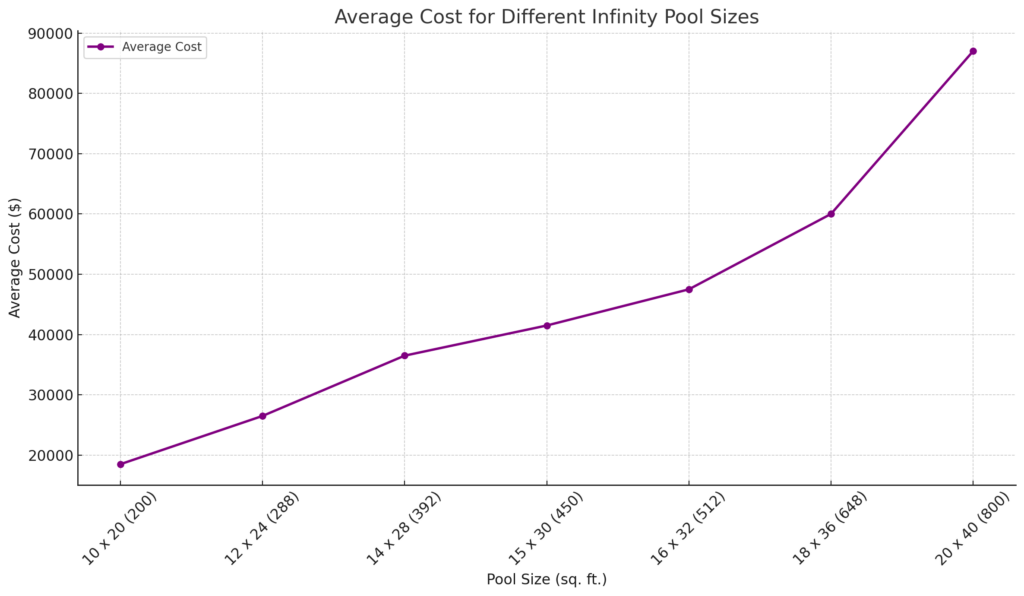
The size of an infinity pool plays a pivotal role in determining its cost, as larger pools generally require more materials, labor, and engineering. Below is a detailed breakdown of the cost range and average cost for various pool sizes, providing you with insights into the expenses associated with different dimensions:
| Pool Size (sq. ft.) | Cost Range | Average Cost |
|---|---|---|
| 10 x 20 (200) | $11,000 – $26,000 | $18,500 |
| 12 x 24 (288) | $16,000 – $37,000 | $26,500 |
| 14 x 28 (392) | $22,000 – $51,000 | $36,500 |
| 15 x 30 (450) | $25,000 – $58,000 | $41,500 |
| 16 x 32 (512) | $28,000 – $67,000 | $47,500 |
| 18 x 36 (648) | $36,000 – $84,000 | $60,000 |
| 20 x 40 (800) | $44,000 – $130,000 | $87,000 |
These cost estimates encompass a comprehensive range of expenses associated with installing an infinity pool. The calculations include factors such as the excavation of the land, installation of the pool structure, and the addition of a catch basin. Additionally, the estimates may incorporate a basic pool surround and finish to provide a more holistic understanding of the costs involved.
It’s crucial to keep in mind that these figures are average estimates and can vary based on several factors unique to each project. Location, for instance, can greatly influence costs due to variations in labor rates, permits, and construction regulations. The choice of materials, additional features, and customizations can also impact the final cost.
As you plan your infinity pool project, these detailed breakdowns can serve as a starting point for understanding the potential expenses associated with different pool sizes. Consulting with professional pool installers and obtaining personalized quotes will provide you with a more accurate understanding of the costs specific to your vision and location.
Land Preparation Costs
Land preparation costs for a pool can vary depending on the type of preparation needed. Here are some estimated costs for different types of land preparation:
- Land excavation: Pool excavation typically costs between $1,500 and $5,000 but can be as high as $20,000. Land excavation costs an average of $3,400, though some homeowners can spend up to $20,000 if they’re excavating an inaccessible area.
- Land clearing: The average cost to clear land and prepare land for a construction site is $2,581. Most homeowners can expect to pay between $1,266 and $3,900 or between $1.18 to $2 per square foot to clear and prep their lot for construction. Clearing a half-acre of forested land will cost most landowners between $367 and $3,078. But preparing half an acre of land to build a home is much more expensive, with site preparation costs ranging between $25,700 and $43,560.
- Land grading: Resloping land typically costs $770 to $3,000 for residential projects, including patio, fence, or swimming pool installation. The size of the area you need to regrade makes an exponential difference in pricing. Leveling a small lot of 500 to 1,000 square feet costs between $400 and $2,000, while grading an acre costs $15,800 to $44,350.
Permits cost
The cost of permits for an infinity pool can vary depending on the location and the specific requirements of the local government. Here are some general estimates for permit costs:
- Building permits: Building permits can be expensive, typically ranging between $475 and $1,900. However, the cost of building permits can vary depending on the location and the specific requirements of the local government.
- Other permits: In addition to building permits, other permits may be required for an infinity pool, such as electrical or plumbing permits. The cost of these permits can also vary depending on the location and the specific requirements of the local government.
It’s important to note that these costs are estimates and can vary depending on the location and the specific requirements of the local government. It’s recommended to check with the local government to determine the specific permit requirements and costs for an infinity pool in your area.
Cost of Different Pool Features
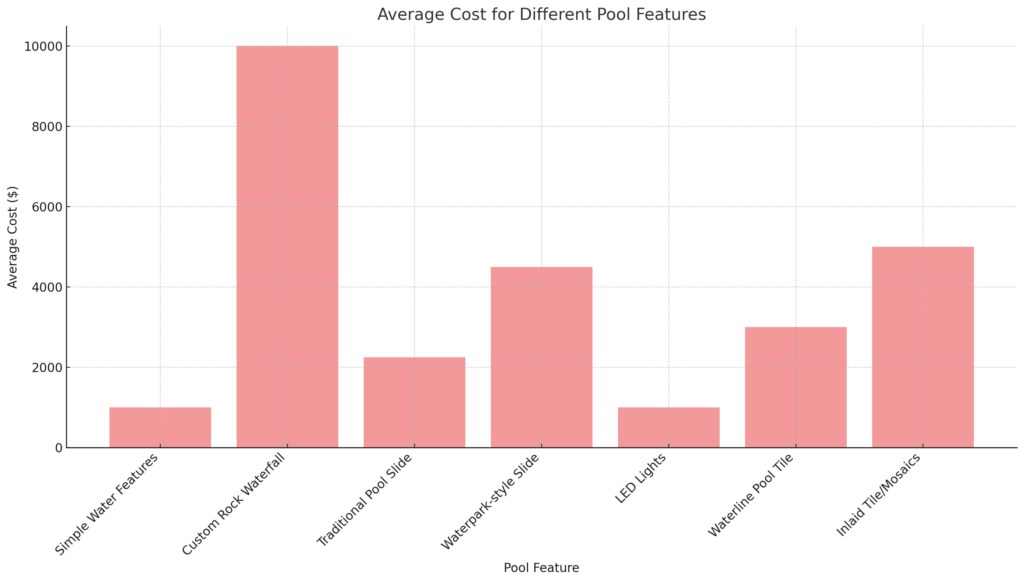
When envisioning your ideal pool oasis, various features can enhance the aesthetics, functionality, and overall enjoyment of the space. However, the costs associated with these features can vary widely, ranging from relatively affordable options to more lavish and premium choices. Understanding the pricing of different pool features is essential for making informed decisions that align with your budget and vision. Here’s a detailed breakdown of the costs of different pool features:
Simple Water Features (Bubblers, Deck Jets)
Cost Range: $800 – $1200 each
Simple water features like bubblers and deck jets add a touch of elegance and playfulness to your pool environment. Bubblers shoot streams of water into the air, creating a visually captivating effect and gentle sound. Deck jets, on the other hand, shoot water arcs from the pool deck into the water, offering a serene ambiance. These features are relatively affordable and can enhance the overall appeal of your pool.
Custom Rock Waterfall Features
Cost Range: $5,000 – $15,000
For those seeking a more natural and scenic pool environment, custom rock waterfall features provide a stunning focal point. These waterfalls can vary in size and complexity, with costs depending on factors such as the size of the rocks, the design intricacy, and the level of customization. While they add a significant visual impact, the cost range reflects the craftsmanship and materials involved.
Pool Slides
Traditional Pool Slide: $2,000 – $2,500
More Robust Waterpark-style Slide: $3,500 – $5,500
Pool slides are a classic addition that brings fun and excitement to your pool space. Traditional slides come at a relatively affordable cost, offering an enjoyable experience for swimmers of all ages. If you’re looking for a waterpark-like vibe with larger and more intricate slides, the cost increases due to the specialized engineering and design required for these features.
LED Lights:
Cost Range: $800 – $1,200 each
LED lights are a popular choice for adding captivating nighttime ambiance to your pool. These lights come in various colors and can be synchronized to create dynamic lighting effects. While the cost per light might seem significant, the visual impact and energy efficiency they offer contribute to the overall aesthetics and usability of the pool after dark.
Waterline Pool Tile:
Cost Range: $2,500 – $3,500 (average-sized pool)
Waterline pool tiles provide an elegant finish to the top edge of the pool, enhancing its visual appeal. These tiles are often chosen for their ability to complement the pool’s color scheme and design. The cost varies based on factors such as the size of the pool and the chosen tile material.
Inlaid Tile and Mosaics:
Cost: More Expensive
Inlaid tile designs and mosaics can elevate your pool’s aesthetics to a whole new level. These intricate designs are crafted with precision and attention to detail, resulting in breathtaking and personalized visuals. Due to the labor-intensive process and the level of artistry involved, inlaid tile and mosaic features can be more expensive.
Maintenance Costs for Infinity Pools
Maintaining an infinity pool is a crucial aspect of ensuring its longevity, functionality, and the captivating visual effect it offers. The maintenance costs associated with these exquisite pools can vary based on several factors, including size, location, materials, design complexity, and the number of vanishing edges. Let’s delve into the detailed explanation of these maintenance costs and considerations:
Average Maintenance Cost:
The average cost of maintaining an infinity pool falls within the range of $1,080 to $1,800 per year, according to the information gathered from search results. This cost encompasses various aspects of maintenance, such as water treatment, equipment upkeep, and general care to keep the pool in optimal condition.
Factors Influencing Maintenance Costs:
- Design Complexity: Infinity pools with intricate designs or multiple vanishing edges may require more specialized care and maintenance. The engineering complexities of these features can contribute to higher maintenance costs.
- Water Catch Basin: One of the unique aspects of an infinity pool is the catch basin that collects the overflowing water. Cleaning and sanitizing this catch basin are essential to maintain water quality and prevent debris buildup, which can affect the overall aesthetics.
- Water Evaporation: Infinity pools are susceptible to accelerated evaporation due to the overflow effect. This requires more frequent water additions to the pool to maintain the desired water level. The cost of replenishing water can contribute to overall maintenance expenses.
- Equipment Monitoring and Cleaning: Regular monitoring and cleaning of pool pumps and filters are essential to ensure efficient water circulation and filtration. Infinity pools may require more frequent attention to these components compared to traditional pools.
Professional Maintenance:
Given the specialized care and attention that infinity pools demand, hiring professionals for maintenance is often recommended. Regular cleaning, bi-weekly water testing, and technical expertise are vital for keeping the pool in pristine condition. Professionals can ensure that water chemistry remains balanced, water levels are maintained, and equipment functions optimally.
Additional Maintenance Considerations:
- Water Chemistry: Regular monitoring of water chemistry is critical to prevent algae growth, ensure proper sanitization, and maintain clear water.
- Water Level: Monitoring and adjusting water levels to compensate for evaporation is essential for the proper functioning of the overflow system.
- Catch Basin Cleaning: Cleaning and sanitizing the catch basin prevent debris accumulation and potential water quality issues.
- Aesthetic Appeal: Maintaining the visual effect of an infinity pool is crucial. Regular cleaning of the pool’s surfaces, including the vanishing edge, ensures the captivating vista remains intact.
Conclusion
The cost of an infinity pool can vary widely depending on several factors, including the pool’s size, location, design complexity, additional features, and the materials used.
While the initial investment for an infinity pool might be higher compared to traditional pools due to the specialized design and engineering required, the breathtaking visual impact and seamless integration with the surrounding environment make it a desirable addition for many homeowners and luxury properties.
It’s essential to consult with experienced pool designers and contractors to get accurate cost estimates tailored to your specific preferences and requirements. While the upfront cost may be significant, the long-term value and aesthetic appeal of an infinity pool can provide a unique and captivating experience that justifies the investment for those seeking an extraordinary aquatic oasis.
Frequently Asked Questions
1. How much does an infinity pool cost in per square foot?
The cost of an infinity pool is typically around $80 per square foot. However, this price can vary depending on various factors such as location, additional features, and customization options. This cost includes the excavation of the yard and the installation of the pool.
2. Is an infinity edge pool worth it?
An infinity edge pool can be a highly rewarding addition to your property. The breathtaking visual effect, the serene ambiance it creates, and the sense of luxury it imparts make it a popular choice among pool enthusiasts. While it does come with a higher initial cost compared to traditional pools, many find that the unique experience and stunning aesthetics make an infinity edge pool a worthwhile investment in enhancing their outdoor space and lifestyle.
3. Do infinity pools lose a lot of water?
Infinity pools create a stunning visual effect where the water appears to blend seamlessly with the surrounding landscape. While they do create a captivating illusion of water extending to the horizon, the water loss in an infinity pool is generally controlled through careful design and engineering. These pools have an overflow system that collects excess water, preventing it from spilling over the edge. While some evaporation and minor splashing might occur, the overall water loss is managed to ensure the pool remains balanced and efficient.
4. Are infinity pools more expensive to maintain?
The maintenance costs of an infinity pool can be influenced by factors such as its size, location, design complexity, and the features incorporated. While infinity pools might require specific upkeep due to their unique design and water circulation systems, the cost difference in maintenance compared to traditional pools is not necessarily significantly higher. Properly designed and maintained, an infinity pool’s expenses can be manageable. Regular maintenance tasks like water treatment, cleaning, and equipment upkeep apply to all types of pools.
5. What is the difference between zero edge and negative edge pools?
“Zero edge” and “negative edge” are terms often used interchangeably, but they have subtle differences. A zero edge pool creates the illusion of water meeting the pool’s edge at the same level, resulting in a serene and reflective surface. A negative edge pool, also known as an infinity pool, goes beyond the edge, allowing water to spill over into a catch basin or reservoir, creating the illusion of water merging with the surroundings.

